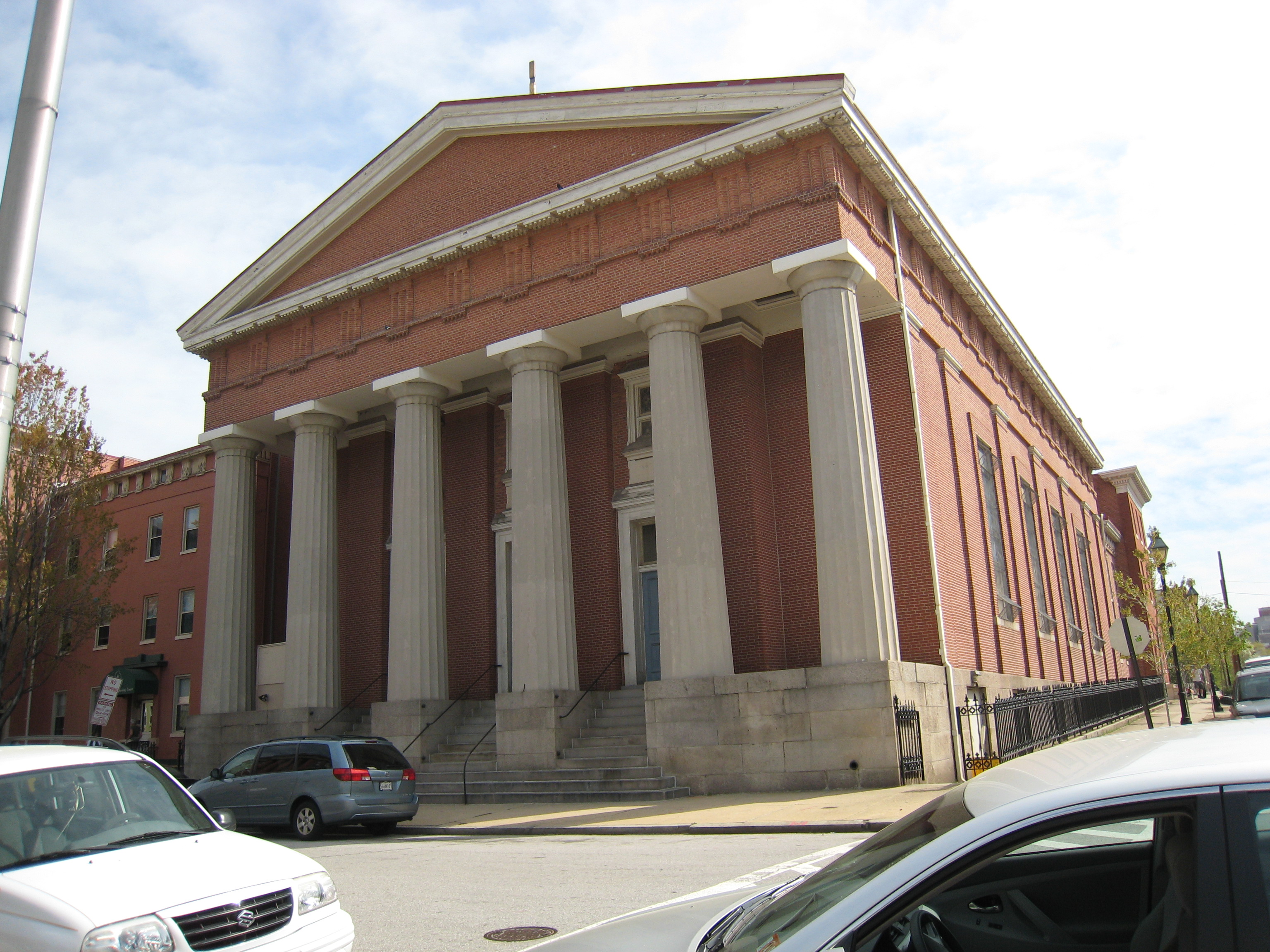This week’s Baltimore Building of the Week arrives one day late, but with two buildings from Dr. John Breihan instead of one. The first of these two Greek Revival churches is St. Peter the Apostle Church built in 1843 at South Poppleton and Hollins Streets.

Nothing shows 19th-century Baltimore’s eclectic taste in architectural styles better than the churches erected by the city’s Roman Catholics. Their Cathedral (now the Basilica) was neoclassical, as were the first two parish churches, St. Patrick (demolished in 1897) and St. Vincent de Paul. St. Mary’s Seminary chapel was gothic. Here at St. Peter the Apostle, completed in 1842, the style is Greek revival. The first Catholic parish on the West Side, St. Peter’s was meant to serve immigrant Irish workers at the nearby B & O Railroad shops. Perhaps as a nod to “Jacksonian democracy,” the church is a brick version of an austere Athenian temple, with six white wooden Doric columns supporting a large pediment. The designer was the fashionable local architect Robert Cary Long, Jr. Three years after completing St. Peter’s, Long used the same Greek style on the East Side of town for another immigrant congregation, the Lloyd Street Synagogue. While the synagogue has been preserved as part of the Jewish Museum of Maryland, St. Peter’s is threatened by the lack of ongoing activity. The Transfiguration Community, combining three West Side parishes, recently consolidated worship in just one church, St. Jerome’s.
